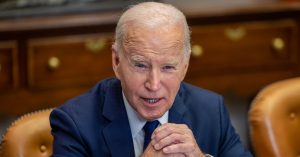
Heading into 2025, consumers, it seems, are a bit confused.
Economic strife and political uncertainty are constant conversation fixtures, and even though inflation has slowed, shoppers are still lamenting prices much higher than those they paid pre-pandemic — underscored by the “no buy” trend on TikTok, which has seen consumers commit to spending less. But despite all this talk, the worst economic predictions didn’t come to pass. Overall, global consumer confidence is “slightly improving, yet continuously shaken,” according to a report by consultancy Bain and Italian luxury association Altagamma.
“People don’t do what they say they’re going to,” said Anna Mayo, vice president of NielsenIQ’s beauty vertical. “We see the same rocky consumer confidence numbers, and then sales continue to increase.”
All this means that brands must contend with a fragmented global shopping landscape and find a way to talk to consumers whose words and actions don’t necessarily match up.
When shoppers are willing to spend, but choosier in how they allocate their dollars, advertising can be most effectively used to convince consumers a brand is offering them value, whether through accessible prices or product quality. At the same time, it remains just as important to find new ways to get consumers excited about shopping that align with their overall brand identity.
Products Worth the Spend
No matter what their spending patterns may indicate, consumers remain vocal that price is an area of concern. As such, brands should double down on highlighting a product’s attributes — think the high-quality leather that goes into a pair of handmade shoes or the multi-purpose uses for a handbag — to convey a product’s value in their marketing.
The goal should be to “convince people not to think why it costs so much, but why it’s worth so much,” said Aaron Cheris, partner at Bain.
For instance, as part of its “Community as a Form of Research” advertising campaign, streetwear brand Stone Island shared detailed product descriptions in captions alongside videos on social media, such as “Down parka made of a very fine Merino worsted wool twill. Resin coated inside for a wind stopping feature” below a video of architect Philippe Starck. The intent was to ensure shoppers were aware of the functional properties of each item to create longer-lasting associations in their minds.
“It’s all product-led. They want to be known for the specific materials and fabrics of their jackets,” said brand consultant Ana Andjelic.
Focussing on delivering a strong product — and then getting the word out through PR — can also help facilitate discovery. Increasingly savvy shoppers are more willing to take the time to comb through reviews to compare price and quality. New forms of product discovery also take external product ratings into account. For example, AI search engine Perplexity, which launched a Shop feature in December, feeds users the best-reviewed items for specific queries such as “best high-heeled leather boots under $100.”
Leaning into storytelling surrounding a product’s durable, high-quality features in the manner of Lee Jeans — whose “Born to be Reworn” campaigns emphasise how the jeans mould to the wearer’s body and get better with time, “with no compromise on utility, toughness, and freedom to move” — will help brands connect with consumers who want to shop.
Transparency, too, will help consumers understand the logic behind a product’s cost. Rare Beauty, for instance, published a statement on the brand’s Instagram in December about upcoming price increases, explaining that the decision was necessary due to rising transportation and ingredient costs.
Nimble Responses to Culture
Beyond proving their value, brands must also work to keep consumers interested and be able to react quickly to changes in culture. From “Barbie” to “Wicked” to “Brat” summer, the past few years have proved that tapping the zeitgeist in short order can be an incredibly effective tool for brands.
But doing so effectively takes more than just hopping onto a trending topic. Outdoor wear brand Filson, for instance, saw an uptick in requests for its short lined cruiser jacket after it appeared on fan favourite character Rip Wheeler on the show “Yellowstone.” Rather than simply catering to that demand, the brand responded by running ads during the series “to capitalise on this moment where it’s very consistent with our brand, this community of Western loving audiences and ranchers,” said Katie McElroy, Filson’s marketing director. After rolling out the sponsorship, the brand saw site visits and conversion rates skyrocket — and took further advantage of the moment by creating a “Yellowstone”-inspired campaign that ran across outdoor, social and search.
In meeting consumers where they are, brands can generate excitement that will help spur word-of-mouth demand. After body mists rose in popularity last year, womenswear brand LoveShackFancy, for example, rolled out a TikTok challenge around their new perfume spray line wherein college students could submit applications to win a branded makeover of their sorority house. Finalists competed by producing videos featuring the mists, driving more visibility for the products among the younger demographic the brand was trying to reach.
“It’s just a matter of planning to a certain extent and then being able to be nimble and be able to shift based on whatever is going on,” said the brand’s founder and creative director, Rebecca Hessel Cohen. If a crucial moment arises, “you can’t be like ‘I’ll get to it on Monday.’ No, Monday is too late, this happened on Friday.”
Consistency in Brand Identity
What’s most important, however, is that all communications — from a cultural partnership to a product-centric campaign — are rooted in a brand’s identity. Even in launching new advertising activations and collections, brands should remain consistent. Andjelic pointed to fashion labels like Khaite and The Row, which are beloved for their specific aesthetics. Customers return to those labels again and again because they know what they’re getting.
“They have their very loyal customer that’s buying full price because they’re like, ‘We want to own your entire wardrobe,’” said Andjelic. “It’s [important to have] that intimate knowledge of your customer.”
There are also countless opportunities for storytelling among the very people a brand was founded to serve. For its campaigns, Filson “[scouts] real people who wear our products authentically, doing what they love, from the rancher through to the bush pilot in Alaska,” said McElroy. That said, the brand also benefits from extending its storytelling to voices she referred to as “believable outliers,” noting the brand’s sold-out collaboration with Japanese designer Junya Watanabe to put a new twist on its beloved cruiser jacket design.
LoveShackFancy’s Hessel Cohen highlighted the brand’s collection featuring US Olympic team gymnast Sunisa Lee, who was featured in its cotton Americana campaign in June, as one that tapped into LoveShackFancy’s core themes like “femininity, girl power, strength,” but it was also meant to appeal to Gen Alpha, a newer target demographic for the brand.
So long as messaging is aligned with a brand’s core spirit, brands shouldn’t be afraid to try something new.
“It’s more risky to not be bold,” said Scott Goodson, founder and CEO of marketing agency StrawberryFrog. “You’ve got to do things differently. You can’t copy the way you communicate brand ideas.”





